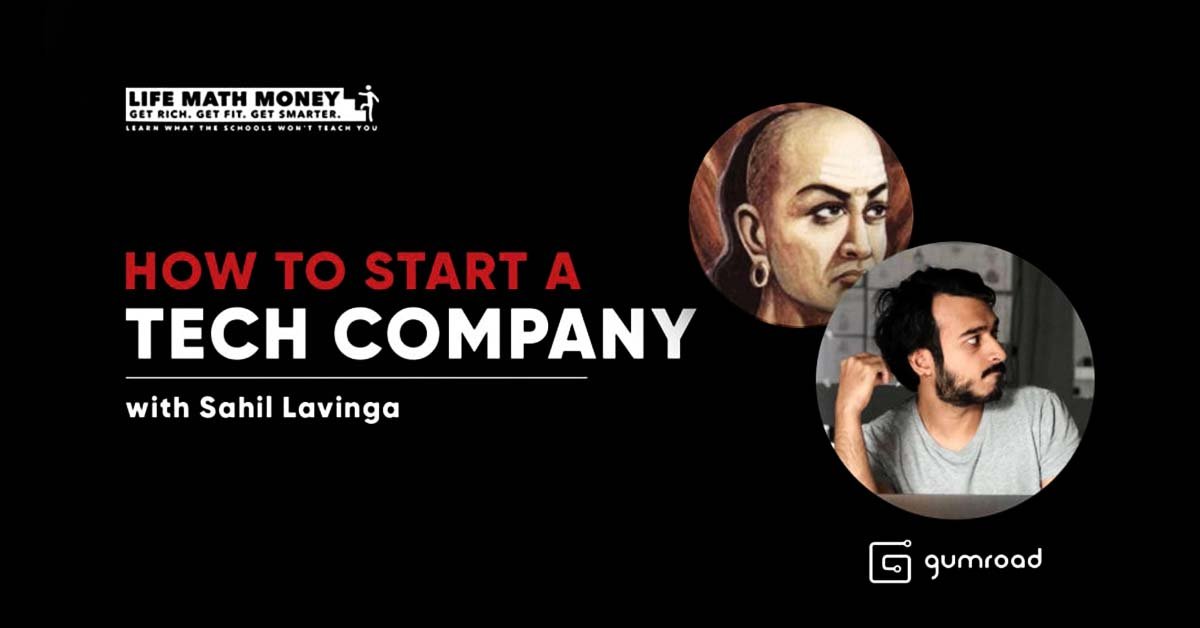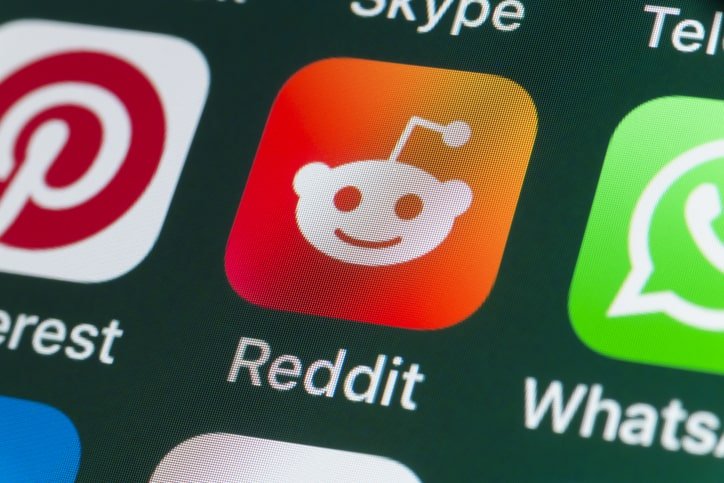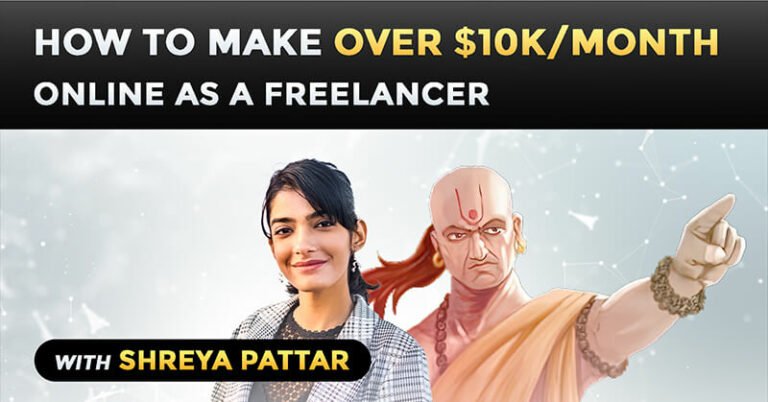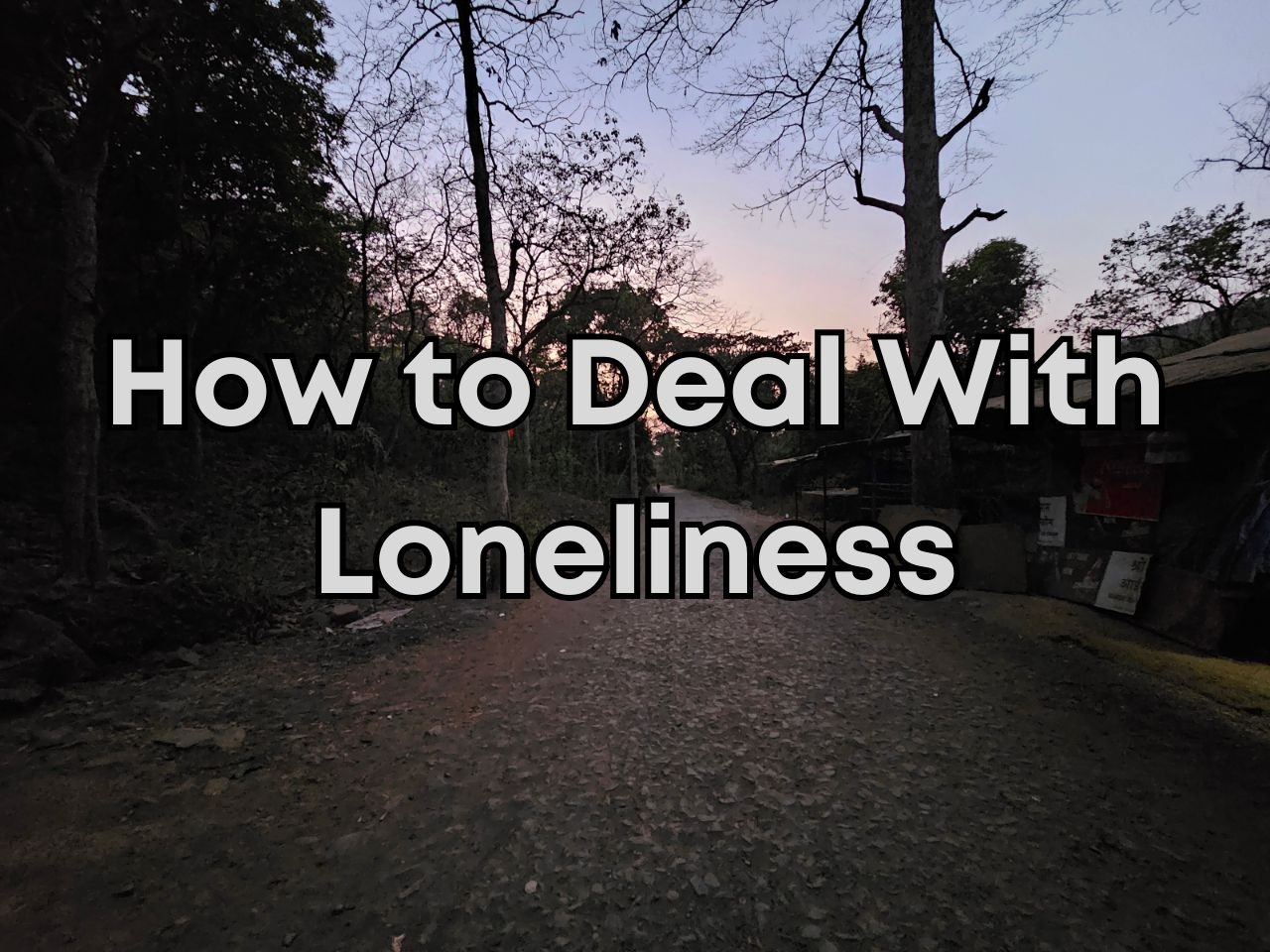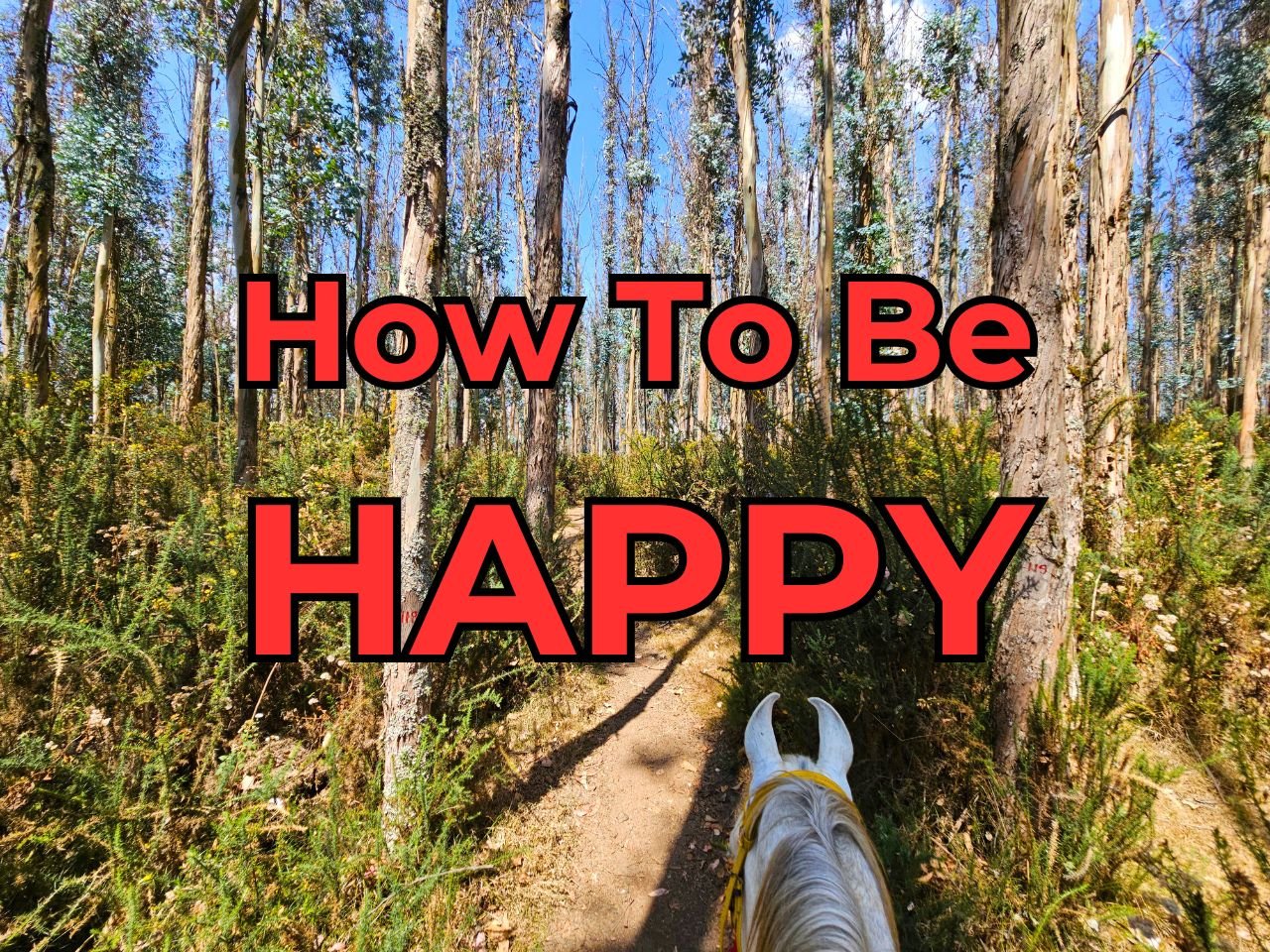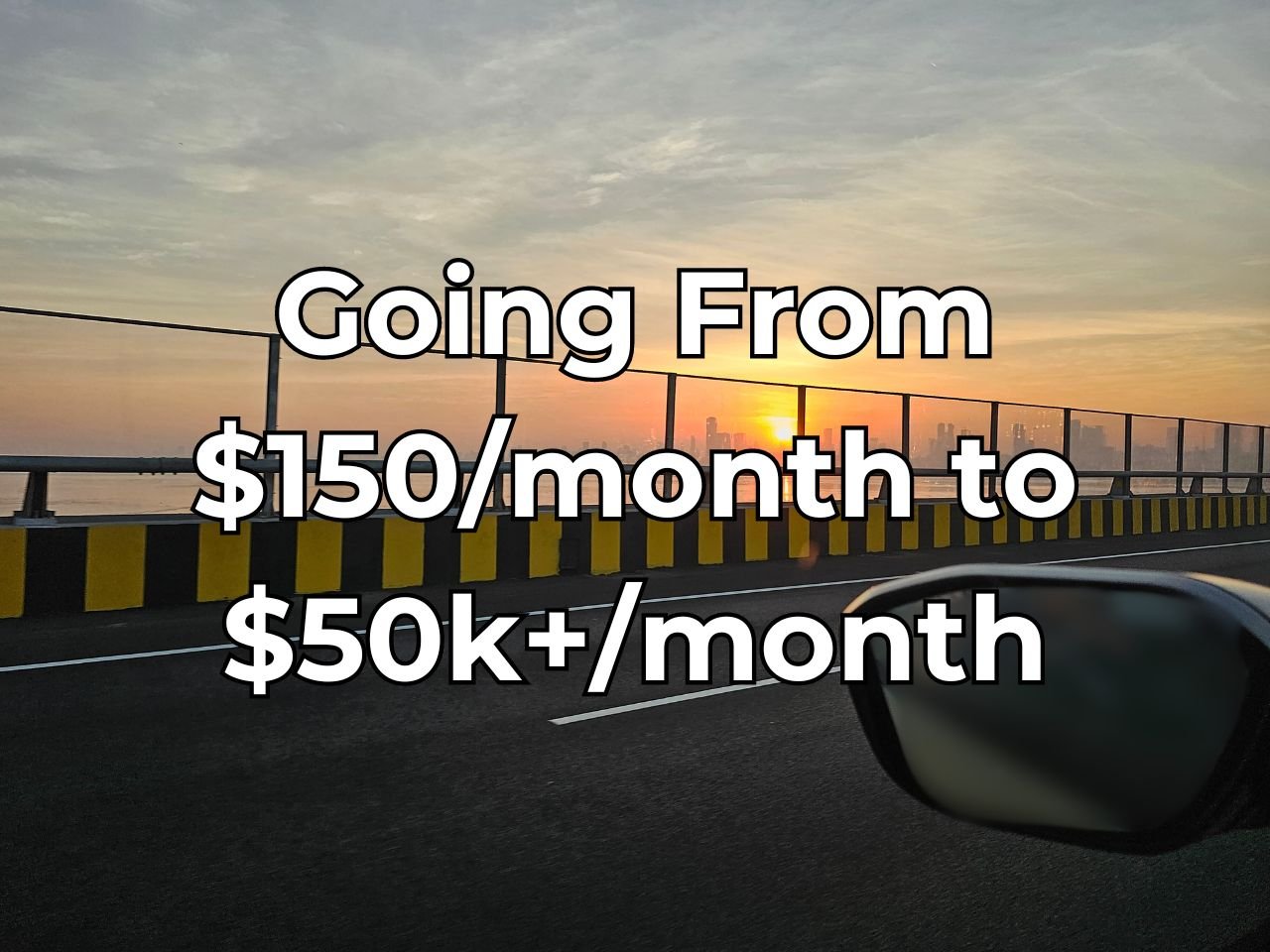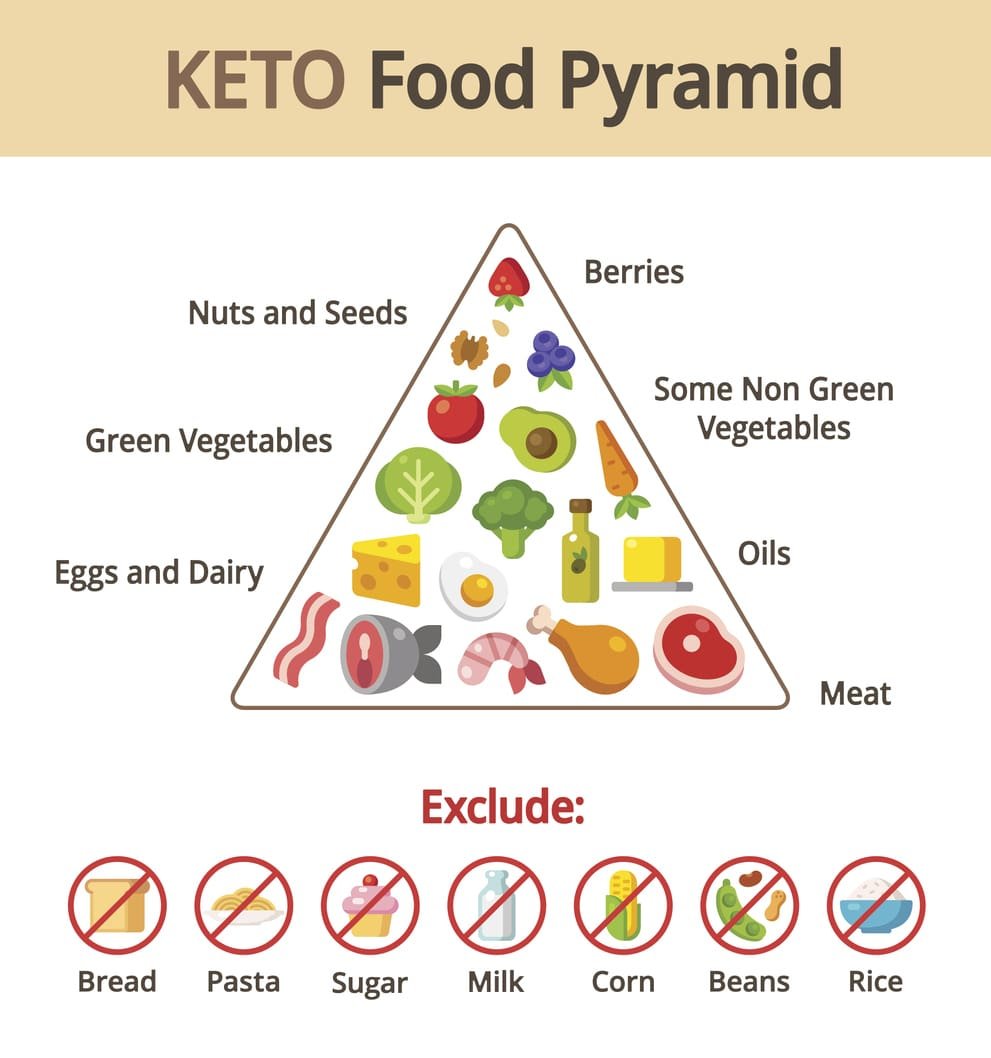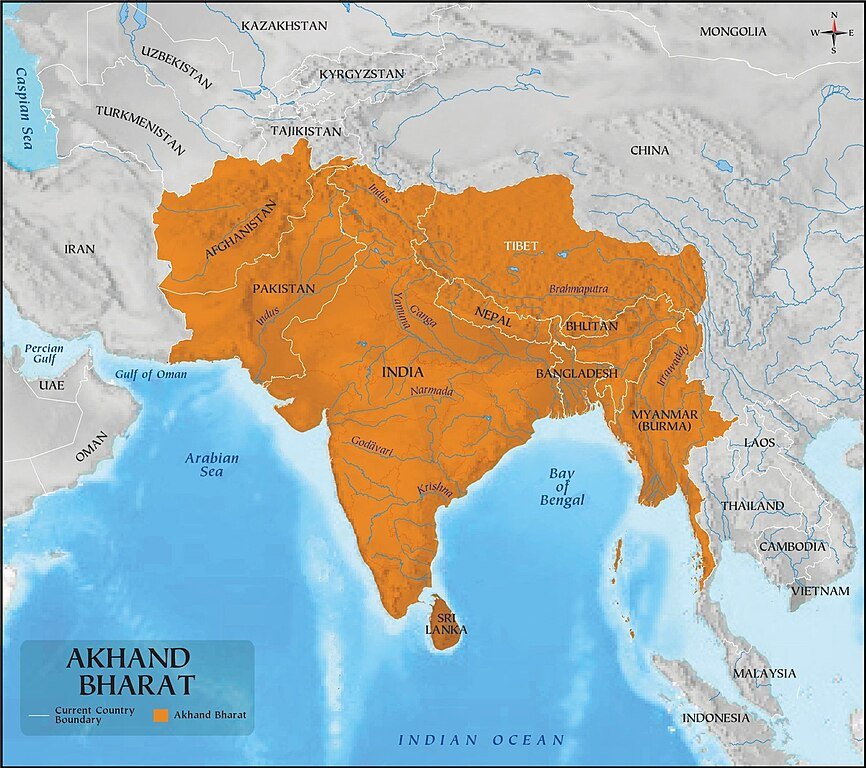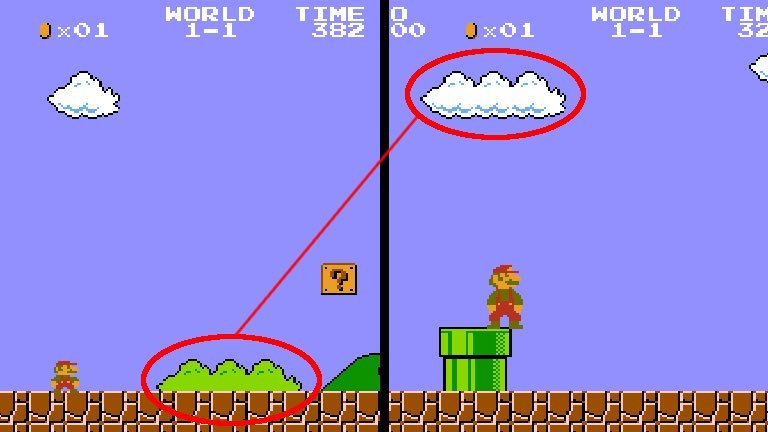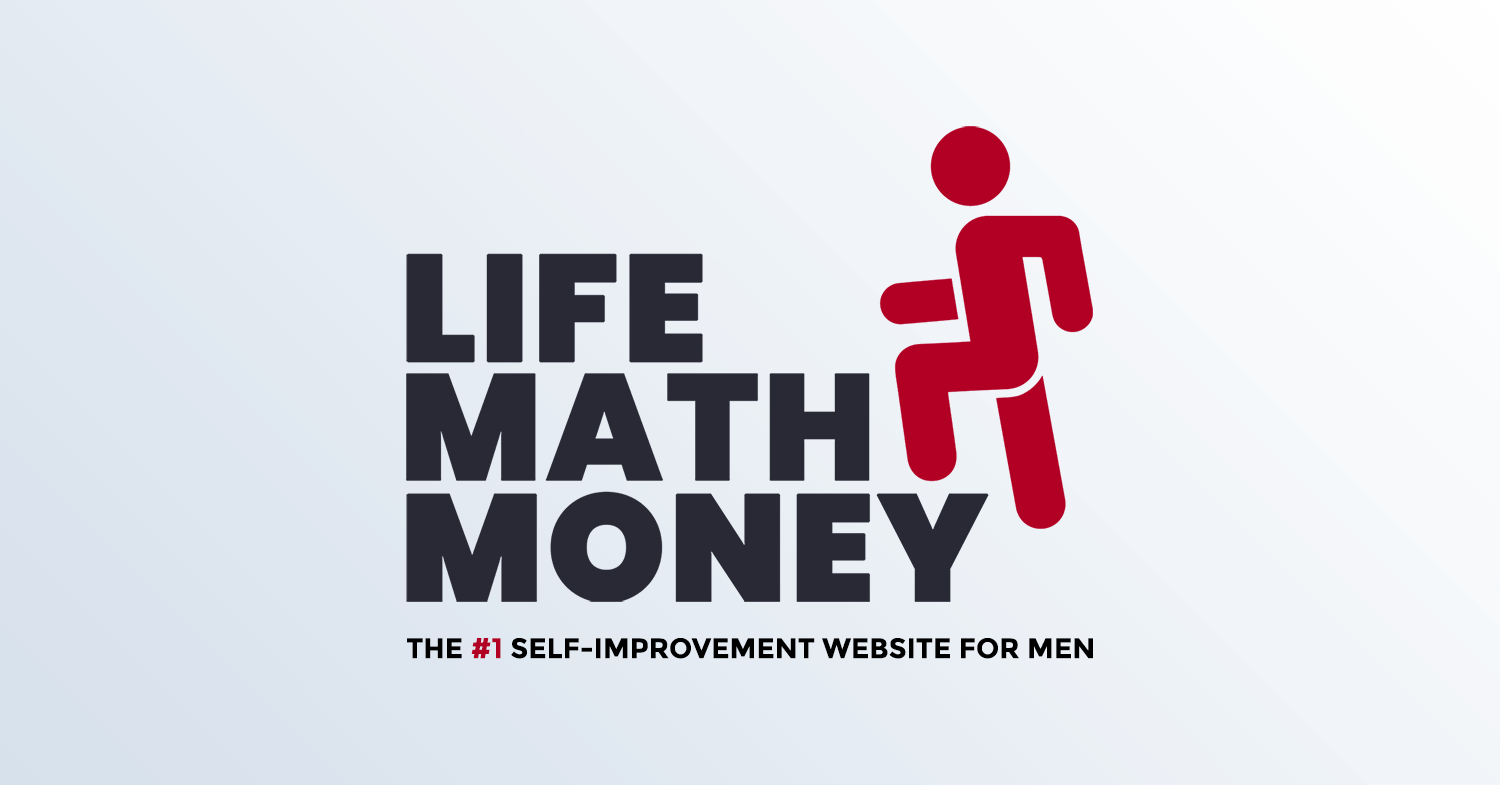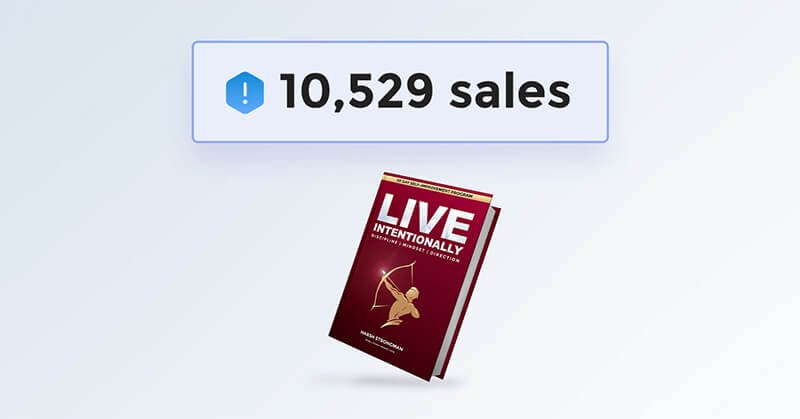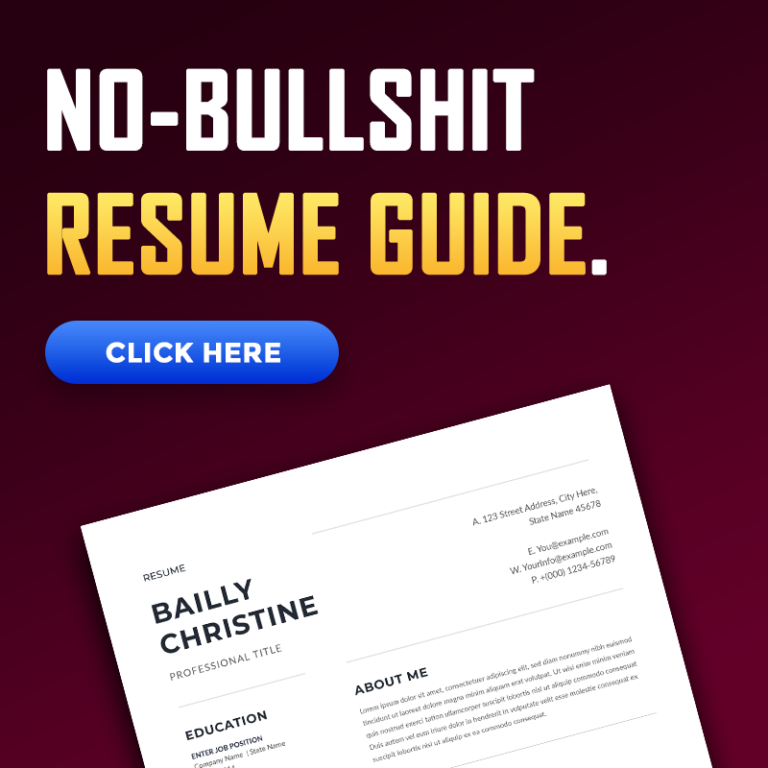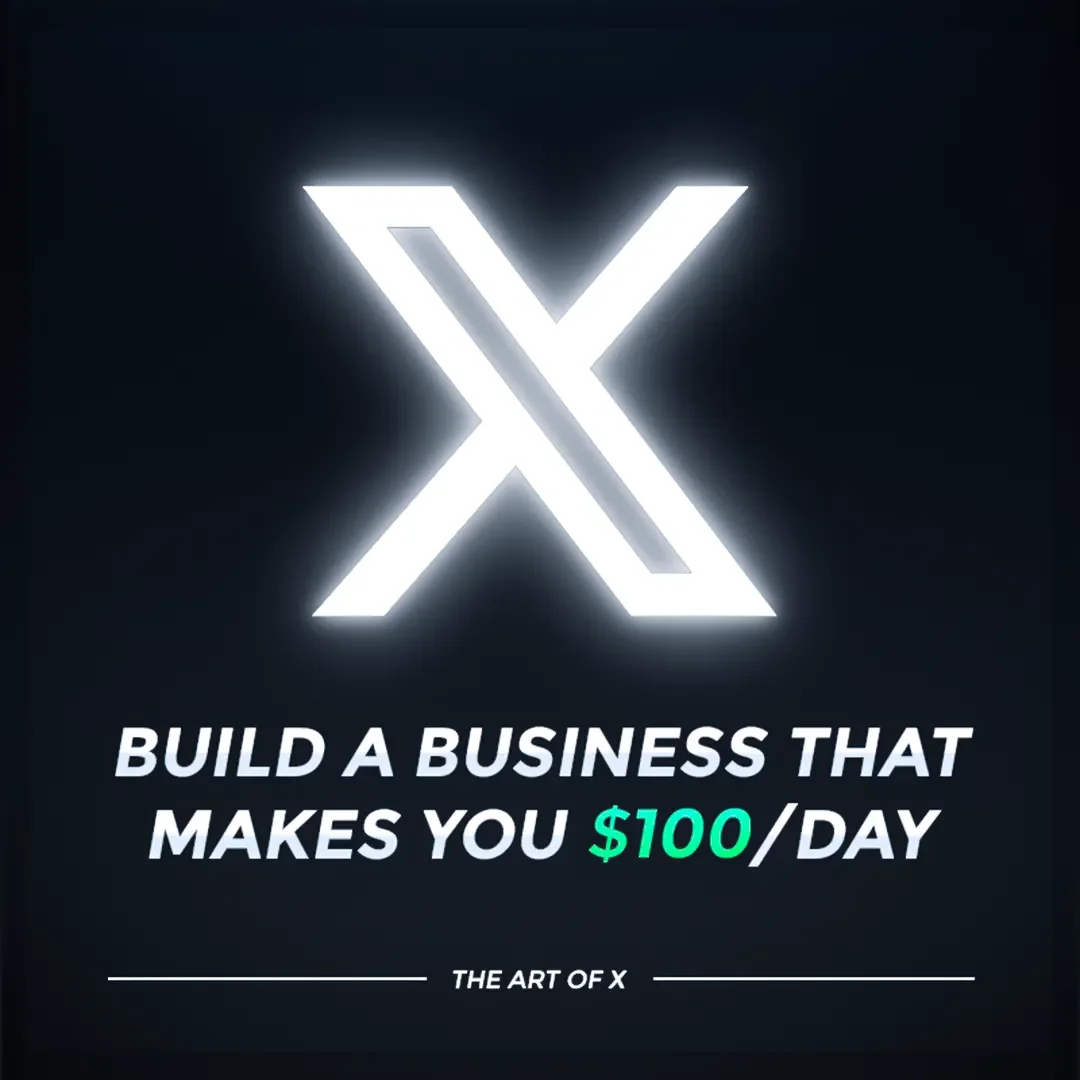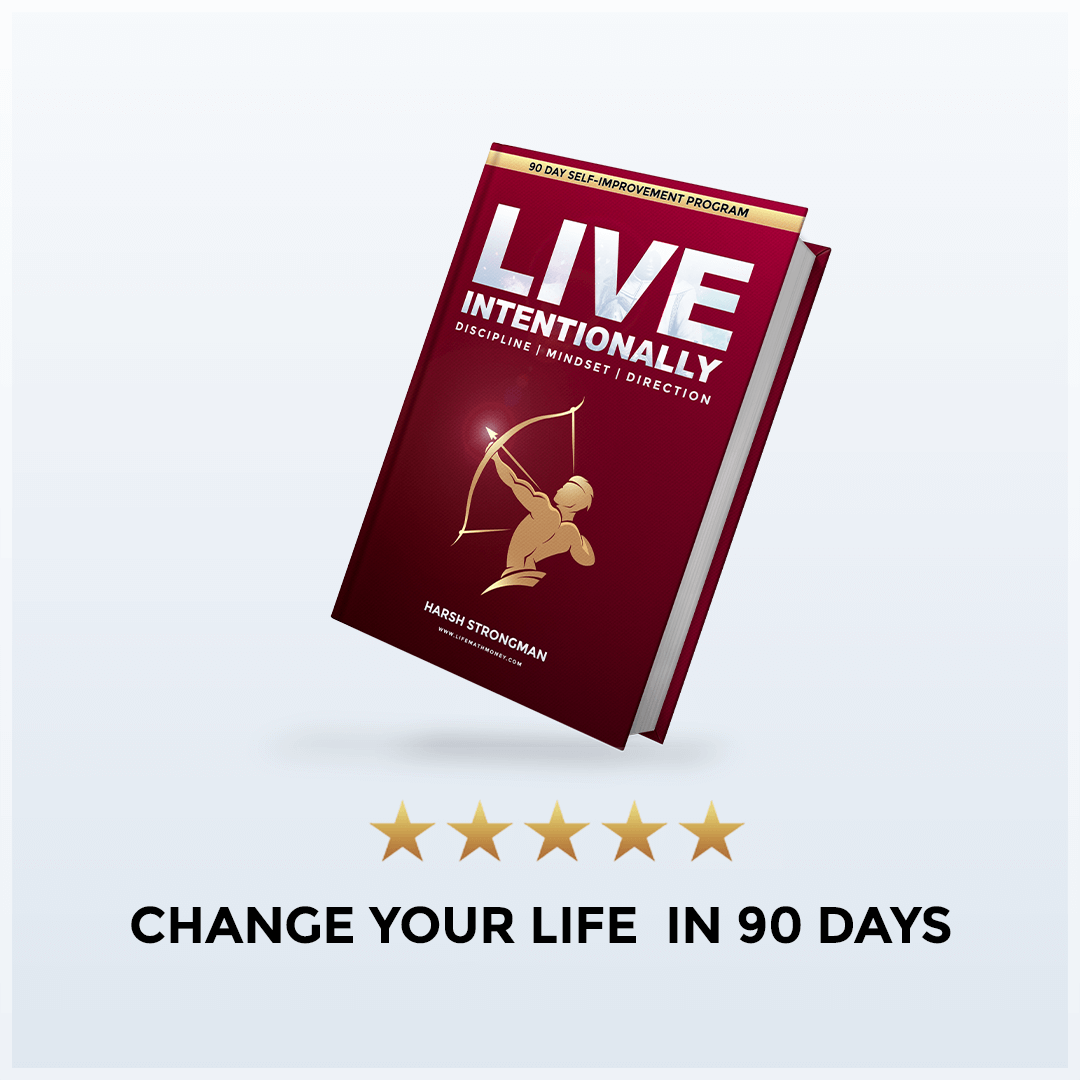Topic: How to start a tech startup
Guest: Sahil Lavinga
About the guest: Founder of Gumroad and was the first employee at Pinterest. Author of The Minimalist Entrepreneur
Listen on YouTube
Timestamps
00:00 Introduction
01:03 The Minimalist Entrepreneur Book
02:55 Where should an 18 year old start to become a tech entrepreneur
05:08 How much coding do you need to know to start a startup in tech? Do you need a computer science degree? What courses would you recommend?
08:22 Which programming language do you recommend starting with? What’s the best language for a beginner to know?
12:00 How to get your first customers as a new tech startup?
14:48 Should you have a co-founder like Y-Combinator says? What are the challenges you faced as a solo founder?
19:06 How do you hire a good employee? What do you look for and what are the things that you want to avoid?
21:56 What do you think of the “Engineers are bad at communication skills” stereotype?
23:10 How much time does it take you to manage the Gumroad at this point, between the employees, the book, and the VC fund you’ve started?
27:48 What does Gumroad as a company look like? GitHub, Accounting, Legal, Software Engineers – what does a tech company structure look like?
33:00 When is Gumroad going to start accepting crypto? (Plus a discussion on cancel culture)
37:35 How did you build a software as big as Gumroad over a weekend? (Plus a discussion on building products for yourself and testing the market)
42:20 Why do you recommend charging money right away instead of giving people a free trial at launch to acquire more users?
44:45 Do you recommend people run advertisements or do you recommend organic marketing in the initial stages?
47:50 How Harsh started using Gumroad and turned LifeMathMoney from a hobby to a business (Plus a discussion on reinvesting in your business)
50:32 Do startups need VC money anymore if your business model involves charging money from day 1? (Plus a discussion on software companies vs hardware companies)
55:03 Was Gumroad your first weekend project? Or did you have other weekend projects before this?
58:30 What do you think of building clones with extra features of products that already exist? What are your thoughts on Peter Thiel’s Zero to One way of thinking?
01:03:49 What are your book recommendations?
01:06:39 Will Cancel Culture affect Sahil and the creator market?
01:07:14 What kind of products work best on Gumroad? Which products do you think sell most? If someone is a creator already, he has a product listed, what factors do you think play a role in increasing his sales?
01:14:04 Parting words / final advice from Sahil to listeners
Resources Mentioned in The Podcast
-
- Get Sahil’s Book, The Minimalist Entrepreneur.
- Sahil’s Coding Project (Part 1, Part 2, Part 3)
- The Odin Project (to learn Ruby on Rails)
- Fullstack Open (to learn React)
- Gumroad v1
Sahil’s Book Recommendations (Amazon Affiliate Links):
- The Almanack of Naval Ravikant (USA, India)
- How to Win Friends and Influence People
- Tribal Leadership (USA, India)
- The Everything Store (USA, India)
- In the Plex (USA, India)
- The PayPal Wars (USA, India)
- eBoys (USA, India)
- Stranger In a Strange Land (USA, India)
- Ishmael (USA, India)
- Dune (USA, India)
- Rational Optimist (USA, India)
- The Red Queen (USA, India)
P.S. If you liked this podcast and are interested in starting a Twitter based business, I recommend checking out The Art of Twitter. This guide will show you how to go from 0 to your very first internet business stream.
Full Transcript
HARSH:
Welcome everyone. Today we have a guest on our podcast. Today we have Sahil Lavinga from Gumroad. He is in fact the founder of Gumroad and, for those of you who are unfamiliar Gumroad, Gumroad is the Amazon for digital products. And I’ve been using Gumroad for the past three years now and it is the best platform out there if you’re trying to sell anything digital like an ebook or a comic book or a course or some kind of teaching product or anything that is software, an image, and things of that sort. So, how are you doing Sahil?
SAHIL:
I’m doing great. I’m super excited to talk to you, as a long-time fan and follower. And yeah, I’m excited to have this book come out soon and Gumroad’s going swimmingly. There’s a lot of cool stuff that we’re working on. So November 2021 and onwards are going to be pretty, pretty exciting for anyone who uses the product, hopefully.
HARSH:
That’s good to hear. So recently, Sahil has written a book called The Minimalist Entrepreneur. And Sahil, can you tell us more about your book? It will be released tomorrow by the way.
SAHIL:
Totally. Yes, tomorrow. Yeah, I totally can. So it’s called The Minimalist Entrepreneur and it’s really a book that I wanted to write to explain how anyone can start their own business. I think, you talked about this a lot, this kind of financial independence, one of the best ways to do it is to kind of become a creator and become an entrepreneur, and control your distribution and control the way that you make money and all these sorts of things. And I wanted to kind of write a book that anyone can read, like my mom could read, and figure out, oh, this is what a business is, this is what it looks like, this is what I have to do to start one, to scale one, to hire people. Basically everything from beginning to the end. I really wanted to write a book that was kind of like a playbook, if you want to start your own little small business. And I always think it’s important to kind of start small, you can always go big over time. I wanted to write a book that answered those sorts of questions.
And it came actually from, I wrote this blog post a couple years back called Reflecting on my Failure to Build a Billion-dollar Company, about Gumroad’s ups and downs. And Penguin reached out after reading that post, an editor from Penguin Random House saying, hey, this is great, you seem like you know how to write, would you want to write a book on these kind of these topics around sort of lean entrepreneurship and sort of not necessarily the kind of billion-dollar unicorn-chasing venture capital raising machine. But I think venture is fine, I’m not anti-venture necessarily, but I do think it’s not super accessible to most people.
HARSH:
Oh no, let’s not skip the line, because venture is a later stage thing. I would first like to ask you, for example, if you take someone who’s still in college or let’s say someone who is 18 years old, where should he start if he wants to become a tech entrepreneur like you? What are the things he needs to learn? Where should he begin? And just to give people a bit more background on Sahil. Sahil was the first employee at Pinterest interest; and he started Gumroad all on his own, it almost failed, and then it was successful again. So Sahil has a pretty good eye on what it’s like to be an employee at a start-up and also how to run a start-up. So Sahil, what skills does someone who is 18 and say, fresh out of college and doesn’t know anything, fresh out of high school and doesn’t know anything, what should he start with?
SAHIL:
I mean, I think the first skill that I think everyone should learn is how to write, and eventually, hopefully, that means writing a little bit of code or at least getting familiar with that, especially if you’re young and you have that inclination I highly recommend it. But in the beginning it’s just learning to write, learn to figure out how you think, how to communicate with other people, how to persuade other folks. Start tweeting, start building an audience, start trying to come up with your own thoughts, read a lot of books, and you’ll get there. You’ll start to have really interesting ideas. You’ll start to be able to connect the dots in ways that no one has before, which is pretty cool that that’s even possible with seven billion people you can still find interesting insights that it feels like no one has yet tweeted. So I think that’s a great place to start. And then learn to build stuff is the other thing I would say, is learn Notion, learn Figma. They are all these amazing tools that exist today that allow anyone really to build a business. And now there are all these payment offerings like Gumroad and Stripe and Paytm, and all these things that you can use to accept payments and so start. Start charging money for something. It doesn’t even really matter what, but I think it’ll train you in a lot of really healthy habits around sales marketing. And then when you over time scale to, you have an idea for a business and you build it and you hire other people, all of those skills will be pretty darn important.
HARSH:
So how much code does someone need to know to start a start-up in tech? Do they need to be an expert? Do they need to know everything? Do they need a computer science degree? Or do they just need to do some courses with freeCodeCamp and get started? What does someone need to know there? And I would also love it if you could recommend particular courses that you found the most useful in your journey.
SAHIL:
Totally. So you definitely don’t need a CS degree. I don’t have a CS degree myself and I think freeCodeCamp is great. It came out after I learned most of this stuff, so I’m not super-familiar with freeCodeCamp specifically. But I used a course, for example, called CS193p, which is a Stanford course on iTunes University that basically was about iOS development, iPhone development, back in the day. And it’s free, all the stuff is free. You can imagine paying $50,000.00 a year to take this course, which is what people do. And there are other courses. It’s free. You can go online, all the homework, all the assignments, it’s all there. They give it away for free. All the best schools in the world do this now. And so yeah, we kind of just start Googling around. I think that course gets you started.
And then I think the important thing to get to is to have an idea. I think lots of people say, oh I want to learn to code. And okay, well what does that mean. What do you want to build? I think that’s the important question. What do you want to build? If you say okay, I want to build a to-do list app on my iPhone, forget about is this a good business or not. Just learn to build. Then just Google, how to build a to-do list app on iPhone. And I bet you that there’s a tutorial out there that is specifically for that. And you will fail and you will run into problems like everyone does, but I think you have to start, then learn. It’s what I often say, instead of trying to learn as much as possible, read a bunch of books and then start, the best way to learn is, just start and then figure it out.
But I think, for me at least, I’m very motivated by this visual in my head of a product that it doesn’t yet exist. I don’t get excited by coding. I don’t get excited. I think this is some sort of a misconception that people have about engineers that we love to code. And I enjoy it for sure, but I think that the satisfaction comes from actually building a product that people can use and pay for and get value from. And so you kind of want to work backwards I think, from what is the idea you want to build? It might be as simple as a job board. Or it might be as simple as, it might even be a no-code solution. You might not even have to write any code. You can go to makerpad.co and learn all these tutorials to plug Zapier into Webflow into Airtable and Notion and Figma and build all these sorts of tools. You don’t need to necessarily learn how to code. And you can always accessorize your no-code pipeline with code over time, as you feel like you need to learn those things. I will say, even if you don’t want to become an engineer yourself, I think having some familiarity with code is helpful. Just in terms of hiring people, I think it’s super helpful.
HARSH:
That makes a lot of sense. So if someone who is 18 and when they hear something like you have to have an idea, most people don’t have an idea yet. So they can still learn how to code. So is there a particular language that you would recommend them? Because even though it’s not super relevant which language to start with, it is the most frequent question people tend to have about learning how to code. So what language do you think someone should start with?
SAHIL:
That’s a good question. I think the language that I would start with personally is Ruby – Ruby on Rails – just because I think, and maybe that’s just a bias that I have, if you’re trying to build a web application then the most accessible thing to me is to build a Ruby on Rails application, just the demo app, figure out how to deploy the demo app, probably to something like Heroku. And you’ll have a website with a URL and a domain that people can visit and it’ll load. And I think that’s a great way to start. And it’s a sort of an ecosystem, Ruby on Rails, so there’s just a ton of tutorials and examples and libraries and things that you can kind of plug into over time. I think if you want to build iPhone apps, I think Swift, learning Swift, is a great place to start. That’s kind of what I would recommend. I think a lot of people would also recommend potentially, frontend JavaScript, React. I find that that stuff’s really hard. It’s really complicated. There’s a lot of moving components. I think the way that I think about it is, when you’re learning Ruby on Rails you’re building for a single server and then people are visiting that server, that website, versus with JavaScript you’re kind of building for everybody else’s computer, all this code runs on their computer. And so I think it’s just a lot trickier, there’s a lot more education just to think about. So I find that if you start with Ruby on Rails you learn a little bit of JavaScript and jQuery and then over time you might learn React, or Next.js is really popular now. But I think starting, starting really simple with Rails, is a great way to kind of learn about schema, database, application layer, routing. All of this basics.
And I actually have a bunch of YouTube videos now, 15 hours’ worth of content where I build an application from scratch using Ruby on Rails, integrate Stripe, do payments, literally from zero to making my first dollar. And so it’s there and there’s tons and tons of tutorials that you can go find. If you just Google making a blog in Rails, there’s a bunch of great YouTube tutorials. It will take you a few hours and you’ll have a blog that’s your own. You could do whatever you want with it. You don’t have to pay anyone for hosting, it’s your thing, which I think is pretty cool in the vein of the sovereign individual, I think it’s a healthy thing. Even if you don’t want to learn how to code, I think it’s a healthy thing to know how to do it, even if you may not need to do it.
HARSH:
That makes a lot of sense. It’s interesting that I’ve never come across your video on coding and setting up integrations with payment processing and everything. So I will be linking that in the description of this podcast. By the way, if someone wants to learn Ruby on Rails, there’s a pretty interesting resource called the Odin Project that you should check out. And if someone wants to learn things like React, there’s a course called Full Stack Open by Helsinki University. It’s available online for free, so people who are interested they can check these courses out.
So Sahil, let’s say that someone has a good idea, they’ve learned how to code, they’ve started their app. And this is actually the case with a friend of mine. He is a programmer. He is a very good programmer. He’s worked with the FAANG people. And I gave him an idea for a start-up, and he’s like I could build it, that’s a very good idea, but I would have no idea how to get customers. So what is your advice on getting your first few customers? Where do you begin with the whole promotions?
SAHIL:
I think the place to start is with your friends and family and start a plan. They call it your first round of funding, your friends and family round. And ultimately when you are new and no one knows who you are, I think you have to focus on, well who does know who you are. Who did you go to school with? Who are your friends? Who are your family? Who are your neighbors? Who’s in your physical community? Start with the people who know you because they’ll use your product because they trust you versus the inherent value of the product. And then I think, generally, I would like to recommend building with somebody in mind so you have that in mind already when you have something to show. But I think just spend time on all the social networks, on Instagram, Twitter et cetera, and try to find who has this problem that you’re trying to solve and who feels that pain point the most. Who would benefit the most from learning about your thing? And it’s funny, a lot of people ask me, oh how did you find the first 100 customers for Gumroad? And they kind of expect some growth hack or some marketing channel or some SEO content marketing strategy. No. It was like I would literally just spend time on the Internet trying to find people who were selling digital files on their website in some terrible way using PayPal and manual emails, and just emailing them. Literally finding their email one by one and saying hey, you know I built this thing called Gumroad, it helps you sell digital files real easy, it kind of automates all the stuff so you have to think about it anymore. And that was it. Just doing that every day, day after day for months. That’s how a lot of businesses get started. And so I think that’s the important thing, is to sort of cold email, cold DM. Cold call I guess could potentially work, but I really focus on cold emails, very personalized, not copy-pasted, to people who I think would really benefit from this problem that I’ve solved. And I always try to solve my own problem so I have some credibility there. I can always say hey, I have this problem that you have and I solved it for myself and maybe this thing can also solve your problem. And I think that’s a very convincing sales pitch.
HARSH:
I see. That’s very interesting and it also makes a lot of sense. One thing I want to ask you is that what you explained is a pretty cool idea and that works if you are a solo founder. And I’ve been watching some videos from something called Y Combinator, and it seems they seem to prefer people who have a co-founder with them. So what are your thoughts on this? Do you think it is good to have a co-founder? And since you’re a solo founder, do you think that you have missed out on something by not having someone to help you with the project?
SAHIL:
Yeah. I think you know there’s a lot of opinions about having a co-founder or being a solo founder, and definitely Y Combinator and Paul Graham are very I would almost say, anti solo founder, where they really discourage it. And I would say that one reason to discourage it is that it just adds a filter. If you say hey, solo founders can apply to Y Combinator, guess what? Everybody is a solo founder. Everyone’s a single human being so you now have seven billion solo founders out there. There’s no bar. But if you say hey, we need co-founders, then it at least shows that you were able to convince one other person to work on this idea with you.
And so I think that’s fine. I think a lot of people don’t ever want to be solo founders. But I do think some of the best investments I’ve made personally had a solo founder. It was run by effectively one person. And even the companies that have multiple co-founders there’s generally one person who is clearly at the helm of the company. They may be the CEO, they’re making most of the decisions, they’re the public face of the company. And there’s Steve Jobs with Apple, Bill Gates with Microsoft, Zuck with Facebook. These are all effectively in my view, basically solo founders. And you do need help. And you can certainly give a bunch of equity to your early employees and you can potentially even call them founding employees, part of the founding team, co-founders.
But I think, I do get worried sometimes that people think that they need co-founders. And I’m just a solitary person. I like just doing stuff by myself and I don’t co-write my Twitter account or anything like that. And so I think for me my preference is to start and build my own things. And if someone wants to start a company and I really want to help them, then I’ll just invest and I’ll help them from a distance. And I find that that’s just my preference, and I think I have that leverage now because I’ve shown people that you can be successful as a solo founder and even, frankly, doing other things at the same time. But I think a lot of people don’t have that leverage when they’re beginning. They have to fall into the framework that people want them to fall into. I do think I have missed out on stuff, no doubt about it.
There’s certain things that you can go out and recruit or raise money while your co-founder’s managing the team. But I would say that the benefit of being a solo founder is that it forces you to hire very, very, very well, because effectively you can only be in one place at one time so you’re either hiring or managing. You can’t do both, as you have to hire very, very high-quality, self-motivated, self-managing autonomous kind of people. And I think everyone should be doing that, frankly, even if you have seven co-founders, but the truth is that doesn’t happen. If you know that you’re going to be able to manage these folks, it makes you more comfortable. And so I think that was a healthy thing for me. It’s like I just kind of have to operate this way forever. And it really helped when Gumroad had the downturn and even when we started doing well. And now I balance Gumroad with this new book and with my venture stuff. I think being a solo founder really trained me in that time delegation, effort delegation, people delegation, all these ways of outsourcing and trusting other people, which I think a lot of founders struggle with. They hire all these people but then they don’t really let them be creative. And ultimately if you want to scale your business that’s how you scale the business, is you basically allow other people to take your judgment abilities and apply it on their own.
HARSH:
So how do you hire a good employee? What do you look for and what are the things that you want to avoid?
SAHIL:
I think it’s really simple here is to get someone who wants to start a company someday, because I find that those folks are very entrepreneurial, very self-motivated, very self-managing. They’re thinking about things in terms of the business logic. Like why are we shipping this feature? It’s not just to ship the feature. It’s so that creators, for example, can make more money, or can save more time or can stop dealing with this annoying thing that happens with Gumroad or saves them a click or what have you.
But trying to get, I’m always looking for, people who are thinking about the business and thinking about the product, not just engineers who are thinking about code. Ultimately we are in service of our customers and ultimately it doesn’t really matter how clean our code is necessarily. It’s what can the product allow our users to do? And so I’m always trying to find people who know that, who are really excited about building product, shipping code.
There are a lot of engineers who just love writing code, those people also exist. And generally, I would say that those people would do really well at Google or Facebook where they can work on a really hard technical problem and get excited about that. And I have a friend at Twitter who’s just super excited about that. Gumroad’s not the place for that. I think Gumroad’s the place if you want to learn how to build a product, so you can start your own product someday. And so I really try to optimize for hiring those kinds of people, and frankly I try to scare off the other folks because I don’t want to waste my time talking to them and I don’t want them to waste their time talking to me if it’s not going to be a fit.
I will tell you the other thing that I look for, which is more specific to Gumroad. But I think with remote work, and asynchronous work will become more common, it’s kind of like what I said in the beginning, people who can write really, really well and can communicate their ideas really really well with each other. Because ultimately, the sort of feedback loop can get quite expensive. If you say hey, I have this idea and I have some thoughts on it a day later, and then you come back with some more thoughts on my thoughts two days later, and three weeks in we’re still discussing. And I try to find people who are really good at almost predicting the kind of questions I would have the first time around and answering them ahead of time. And it’s kind of a different skill-set than writing code, being able to communicate your ideas. But I do think there’s sort of some correlation there where I think some of the best engineers I’ve ever met are just phenomenal writers, they just can communicate their ideas really well. And I think that means that if they can communicate unusually well then they can take a complex problem, break it down into its component parts, and ultimately that’s not too different from building a product and writing code to do that.
HARSH:
Makes sense. I think people usually stereotype engineers as people who are bad at communication. But I bet there are engineers out there who are pretty good at it, and Sahil it seems like you have found some, haven’t you?
SAHIL:
Yeah, totally. It’s not easy necessarily. We have to kind of search the globe for them. But we have dozens of them at this point. We probably have 20 or 30 engineers at Gumroad who have this feeling, or they can write code really well, of course that’s kind of a necessary thing, but they also have soft skills.
They can communicate really well, they know how to share their ideas, it’s almost like body language in a way but it’s kind of a virtual body language. They just know how to make everyone feel good and have positive energy. And they exist.
And I think it is kind of a learnable skill, just like code, just like writing, you can learn how to communicate, you can learn how to consolidate your ideas. And I think part of the exciting thing about Gumroad is you get feedback on your ideas.
So ideally, it’s the kinds of people who want to get better at that skill that will join Gumroad, because that’s a lot of the value they get. “Oh, so Sahil is going to be looking at my work and critiquing it, so that I can improve at writing, et cetera.”
HARSH:
So at this point Gumroad is pretty mature, I would say. You have a good product, lots of customers. How much time does it take you to manage the company? And how do you manage your employees given that you have 20 employees, you’re writing a book, you wrote a book, you’re managing a VC fund now? So how do you manage it all? How do you ensure that all the employees are actually working? Especially that now that they’re working by work from home?
SAHIL:
That’s a good question. I think ultimately I just observe the output, and sometimes this means that the feedback loop is slower, but I really just say if you’re shipping code then you’re doing great. If you’re improving, what I say is, if you’re creating value for our creators and there’s an obvious paper trail of you doing that, it may be answering support tickets if you’re a support person, it may be writing internal documentation so we can be more efficient as a team. It may mean building a new product feature or fixing a bug. But there should be a clear paper trail, evidence, objective, anyone can see it and agree that it exists. On a weekly at least basis there should be a very clear and it should almost undeniable. I shouldn’t even have to think about it. And this is why I try to hire CEOs to be CEOs, is they’re thinking about this almost like I’m a board member of their company, their one-person company that is kind of contracting for Gumroad or something like that.
So that’s how I keep tabs on things. In terms of how long it takes, honestly not a ton. I generally spend a few hours on Mondays and then a few hours on Fridays, and of course I hop in, in between then. But I think in terms of the essentials, it’s probably just a few hours a week in terms of making sure everyone has feedback on the ideas, anything that is urgent, or any meetings I might have with some partner. I can do, it’s probably less than 10 hours a week. And then obviously I work more than that but I spend most of the time on optional kind of R&D, I would say, like talking to creators, learning about crypto, hiring, R&D-ing a totally new product, exploring a new thing we could do. A lot of non-essential, but I think in terms of if Gumroad is relevant 10 years from now, things that are going to be incredibly important. And I actually think the founders and CEOs that are spending 40/50/60 hours a week managing people, I think of that as almost a failure. It’s kind of well you need that free time and space in your mind to go out and think about these ideas. Because you have to be innovating. You have to be. There’s new technology coming out all the time. And if you don’t, if you’re spending all your time just managing your folks and making sure they’re being productive, it’s likely that, I think, your company will stagnate eventually.
I also think the best employees, they don’t want to be managed deeply. Or maybe that’s not true. Maybe it depends on the types of people. But at least the people that we hire, when I say hey, I’m in Mexico City for four days and I have a book launch, I’m not going to be online for a while, I think they’re like, awesome! We can do our work, we can ship Gumroad, and we can manage ourselves and you’ll come back and see all the cool stuff that we’ve done. And so that’s a lot better than maybe saying hey, I’m going to be gone. I’m going to be checking Slack every two hours, so blah-blah-blah. Just like that just generally, I don’t know, at least for me personally I don’t like those kind of working environments so I try to avoid them.
Ultimately the question I was asked is, what’s the kind of company that I would work for? And I was an early employee at Pinterest, so I know what are the kinds of things that people want. And people like me, we want autonomy, we want freedom, we want the ability to make our own decisions, and then we want feedback so that we can improve. But we don’t want to be micro-managed, we don’t really want to be told what to do, we don’t really like busywork, we hate meetings. I hate meetings. We don’t do meetings at Gumroad and that saves me a ton of time, alone. And we don’t even have calendars. No one knows when I work and I think that’s really healthy. I think moving to that kind of format, especially when you have kids or you’re traveling or you’re in a bunch of different time zones. I think that’s going to become a very, like 10 years from now we’re going to look back and be like, wait, what? Everyone was required to work at the same time? Like a sports team? That’s weird.
HARSH:
I think it comes down to how people perceive businesses. I think people who have never been an entrepreneur, they think of a business and they think of some kind of big structure with things in it that they don’t understand, there are lawyers and everything. But really, I would say Gumroad is, I don’t know how or what it is, but it’s probably like some software on GitHub, you managing it, some people writing the software, and maybe one guy who runs the whole accounting and legal part. Could you tell us some more about that?
SAHIL:
Yeah. This really fits into this idea of minimalist entrepreneurship where a lot of people, you’re totally right, have this idea that running a business is like a bunch of lawyers and finance and operation and tax and paperwork and payroll. And it’s really not. It’d be like, yeah, when I tell Gumroad, we’re over 10 million in annualized revenue and you’ve totally nailed it, it’s a GitHub repository, it’s a bunch of code hosted on GitHub, we deploy it to Amazon AWS. We use Figma for all of our internal design mocks. We use Notion for all of our internal operational documentation. And we use Slack for our more real time-esque conversations. And we use Gusto for some payroll. We use bill.com. I outsource all the accounting and all of that stuff to a firm that we pay a few thousand dollars a month and they handle all of that complexity for me. And every Monday I just have to come in and approve, just really just go through and kind of swipe left. And that’s it. And once a year we pay taxes, that’s pretty important. But again, I don’t have to do that. It’s sort of a one-time once-a-year kind of thing.
And the cool thing is if you can build a product, and this is an idea that I wanted to communicate in the book is, if you can build a product, if you can sell and market it and you can get traction and you have product market fit and you’re profitable and you can maybe even have enough money to hire someone part-time, all of the other stuff is not that tricky because guess what every business has to do it. So there are accountants, there are lawyers. These people exist to solve these problems for profitable businesses. And so once you’re profitable and you have a business and you have customers, all of this stuff is kind of easy to figure out. It’s not that complicated. And I think, I worry, that some people they think that oh, a business requires an office and a suit and all this. No. Gumroad doesn’t have an office, we haven’t had one for six years. We don’t have a full-time accountant or a full-time lawyer or general counsel. You can pay all these people by contract, which is by the way, what all these companies do. Even Facebook probably has a bunch of lawyers on contract. It’s the new way of the world in 2020/2021. And I think that’s great. I think it’s awesome. But yeah that’s it. Gumroad is literally, oh we have a Stripe account I guess to process some payments and PayPal, et cetera. But that’s about it. It’s a very simple set of services.
And if you search through, I have these board meetings on YouTube if people are curious about what goes into even running a company like this, and it’s like a 30-minute that here are my revenues, here’s the GMV that we process for our creators, here’s how much money we made. Pretty simple stuff. Gumroad was initially a right weekend project, so I built it in a weekend, and everything else since then has just been scaling this fundamental idea.
And so I would really encourage people to think about it as, yeah a business is literally just a tiny, tiny legal structure, layer, wrapper, around your product. But don’t get hung up on the business part I think. I think a lot of people get stuck there and they think of this massive machine with tons of employees and they have to learn all these things and if they don’t do it right they’ll go to jail. Like some crazy. And they have to pay for some expensive office and move to a city. No. You have to do any of that anymore. Maybe you had to do that 10/15 years ago. Before, back in the day, if you wanted to sell software you’d burn it onto a CD and then you’d have to sell it to a retailer and they’d sell it for you. Now you can have a Twitter account, you can use Gumroad or Stripe or what have you, you could sell ebooks directly. And boom! Guess what? You have a business. You hire a lawyer to help you or an accountant to help you pay taxes and do your paperwork, and boom! You’re good to go.
So I really encourage people to really try to think about a business as a very, very simple legal entity that all it does is accept payments and pays people and pays taxes. That’s basically it. A trillion-dollar company is still a very simple kind of legal structure. And you see this with crypto, because you’ve basically taken some of the fundamental things that a company does and put it on the blockchain. And you can see it. Oh wow, it’s like 300 lines of code, that’s what a company does.
HARSH:
So since you touched the topic of crypto, when is Gumroad going to start accepting crypto?
SAHIL:
As soon as it makes sense. I’m watching it really, really, really closely. And I’m a big crypto fan myself, even though every once in a while Gumroad’s account will tweet about NFTs gets canceled for the tenth time.
HARSH:
Cancel culture people are like 1% and you think they’re loud because they just make a lot of noise, and every time I get “canceled” I lose like 100 followers of 250,000, but my mentions would be full of all of these people. So these people are not your customers.
SAHIL:
Oh yeah. You’re totally correct, they are not customers. And honestly, I just think that there’s just too many. Right now they’re still, for example with Ethereum at least there’s gas costs that are too high, you can’t really buy an ebook for ten bucks using Ethereum right now. There’s new bitcoin, like the Lightning Network that I think is interesting. Stripe just announced that they’re kind of building a new crypto team that used to support Bitcoin that kind of deprecated it in 2015 when it didn’t really get enough traction. Because it turns out a lot of people won’t accept crypto because everybody wants to have crypto, which is awesome, but not very many people want to pay with crypto. Because there’s this sort of famous story of buying two pizzas with a thousand Bitcoin, and et cetera, et cetera. So I think that’s-
HARSH:
I don’t think that’s true and I’ll tell you why I think that. That’s because I accept payments in crypto and the way I do it is that people will pay me in crypto and then I’ll send them a 100% discount link from Gumroad. And I happen to do this a couple of times.
SAHIL:
How do they pay you? What cryptocurrencies are there generally?
HARSH:
They pay me usually something like Monero or Bitcoin Cash or even Bitcoin, Ethereum, Tron. All of these cheaper cryptocurrencies that don’t make you break the bank to do a transaction.
SAHIL:
I actually think Solana, and I’m watching that project pretty closely, because I think eventually someone will crack the problem of making it super quick, super easy, low transaction fees
HARSH:
And decentralized.
SAHIL:
And of course an essential component of this is decentralized. And we will be one of the first when it makes a lot of sense to do it. I think we will be one of the first. And of course a lot of people ask about NFTs, similarly I’m a huge fan of NFTs. I own some myself. I’ve minted some myself. We have some projects in the works. And again, we will almost definitely support it at some point in the future and hopefully we will be one of the first to do it when it makes sense.
I think the other thing is, as you know, just as a counter point, being a US-based company it’s a little dangerous sometimes to get into crypto. It’s almost better to almost start a new company that’s only doing crypto stuff, because you sometimes just don’t want to expose yourself to that regulatory sort of liability. For example, when a Gumroad creator signs up, we have to do KYC, we have to collect all their information, our banking partners require that. A lot of it is stupid, to be honest. These are old stupid rules. But I’d rather follow them than be in jail, unfortunately. But crypto, you can do a lot of this stuff without knowing who anyone is, and I think that’s great. Personally I think that’s where the world is headed. I think that’s inevitable.
But I also am a US citizen and I need to be a little careful as well, and so. And maybe the answer is we build a totally new product, that’s just crypto. It’s like Gumroad for crypto. Gumroad for NFTs. Or maybe it’s a totally new company. I don’t even know. But a spend a large amount of my time thinking about crypto and talking to people on crypto and investing in crypto. I’m very bullish generally. So it seems like an inevitability and it can’t come fast enough. Because I’ll tell you, I hate credit cards, I hate chargebacks, I hate the 3% fees, I hate the 30-cent interchange. Credit cards suck. Especially for merchants, they really really suck. So I think a lot of people want it to change and unfortunately a lot of people also don’t want it to change and so. But I do think that ultimately with the decentralized crypto stuff will win long-term.
HARSH:
Interesting. So what you said makes a lot of sense. And given that your shoes are someone that you are a US citizen, you have to follow the law there. I do want to, since you had mentioned this a bit earlier, you said that you made Gumroad over the weekend. And that sounds really incredible to me. Such a big software, you made it over the weekend? So how does that work? Because when I look at it now I see so many features, so many ways to host products, I see Gumroad Discover. How did you create all of that so fast?
SAHIL:
Yeah. I mean, so definitely there’s a lot more. It’s been 10 years since then, so we’ve definitely, hopefully, done a lot and so Gumroad is definitely a much more complicated, sophisticated product than, it was 10 years ago when I built it initially. You can, by the way, link this in the shoutouts. But if you just Google Gumroad V1 you can find the original source code and all the Git commits from April 2011.
HARSH:
Let me put it out in the chat then so I’ll remember. Gumroad V1.
SAHIL:
Awesome. But initially it’s, and if you go to archive.org you can find an old screenshot of the homepage as well. But it was basically you create an account with an email and a password and that’s not too hard to do. Most people I think with some of Ruby Rails background can figure that out in an hour or so. And then you create products, which is also pretty simple. Simple database table with products, which is just name, description, price in cents. And then it was basically we generate these almost like Bitly links, Gum.co or at that point Gumroad.co/l/1234 et cetera. And then that page would have a credit card form. It would display the name and the description that was entered and use Stripe to have a credit card form in line as well and a pay button. And then when you paid we would basically just redirect to the file. I forgot that part. When you create the product you have to say, well what are you paying for, what files do you get access to. And then it would just do a redirect to that. Once we approved your payment we would redirect and that was like the MVP. And actually the thing that is missing from this is, well how do creators actually get paid. Because all this money is flowing into Gumroad’s Stripe account. And the way that I did that was, I would get paid via Stripe and then I would move that money manually to PayPal and then I would manually literally do a database query, figure out how much everyone is owed, and then just pay every single person out manually one by one with PayPal, once a month. And then every time I did that I would go into the database and reset their balance to zero. And literally, do I recommend doing that? To start? Yeah. You can do a lot of the stuff manually at first and then over time you can automate, scale it. Now we have a much more sophisticated thing but, engineers much smarter than me are in charge of that kind of stuff.
HARSH:
So what you’re saying is that you first built a product that worked and solved the problem, and then you figured out how to make it better and you added all the frills and the features to it. But the initial was just something quickly done to test the idea?
SAHIL:
Exactly. And I think that the important thing, at least for me is, I always go back to this. How can I know that I’ve created something valuable, even if it’s a tiny, tiny amount of value? And I think the best way is to charge money. It’s to say it’s five bucks, it’s ten bucks, it’s $1.00. Any amount of money. It’s more about the friction than even the dollar amount. And I think that’s what I think about it. If I can figure out, if I can build something that’s slightly valuable in a weekend and have some credit card form somewhere so they can pay me for whatever service or product that is, then I can build, Gumroad right now does discount codes and analytics and how we have mobile apps and a library and Discover and tons of different payment options and payout mechanisms and blah-blah-blah and all this crazy, cool stuff that’s coming down the pipeline. And we’ll build Circle integration and Slack, we’ll automate a lot of this stuff for community people, and a lot. To be honest, at Gumroad we have so much more to do. So even today, I’m like wow, we’ve barely done anything. So I think a lot of people, they’re like, oh one more feature, one more feature, one more feature. But I really think it’s better to start small, pick a really tiny idea, make sure that you’ve actually solved a real problem, start charging money, and then you can build all the features in the world. But I think you should do that after you’ve launched, not before.
HARSH:
So you recommend charging money right away instead of giving people a free trial at launch? To acquire more users?
SAHIL:
Yeah. I think this is maybe a contentious kind of topic. I think a lot of people say, well no you shouldn’t charge money for it, you should try to really get as many users as possible early, and you’re going to prevent people from actually signing up and getting to love and use the product. And certainly there’s the freemium model that Fred Wilson has written a lot about. But I do think even if you have a freemium product you should still have the “mium” product part. You should still have some paid component.
And then maybe it’s even as simple as a Stripe invoice link or even here’s my PayPal address, PayPal me 20 bucks and I’ll do this for you. Some way for people to opt into paying you. Because the truth is, people have money, they have some amount of money, and if you’re providing a valuable service and you’re able to save them time or make them money or save them money, they should pay for you, they should pay for that service I think. And I think this is a really healthy thing.
Even when I started making iPhone apps, I wasn’t making free iPhone apps and trying to get a million users. I would make a little app, I would charge like 1.99 for it, and I’d make a few thousand sales. And maybe it would have been nice to have millions of users and it would have felt really good but that’s also a lot of pressure. I think one nice thing about charging is you really get to know your customers, you feel accountable to them and you can really solve their problems one by one. Make sure you have product market fit and then you can growth hack, you can try to acquire thousands and thousands of users, you can have a free plan, blah-blah-blah.
But I think you really want to make sure that what you’ve built is actually valuable, I think, before you do that. Otherwise I think you’re going to spend all your time and effort and maybe even your advertising dollars, et cetera, trying to get all these thousands and thousands of users, but then they all sign up for the product and then a month later none of them are using it anymore. They all churned, because they don’t actually find that much value in it. So you have to be careful. I think there are a lot of these, you see this all day with product hunt. Every day there’s, I don’t know, dozens and dozens of projects launching on product and most of them are free. And how many of them a month later are active. I don’t know. But my guess is, not very many of them.
HARSH:
So do you recommend people run say advertisements? Or do you recommend organic marketing initially?
SAHIL:
Initially I recommend organic marketing. The reason is advertising is very expensive, it’s very inefficient, it’s kind of like blasting the same image or piece of text in front of lots and lots and lots of people. And obviously it works, but I think it works the better, the more you know your audience the more you know who is going to pay and find value in your service, the more specific your ads can actually be. And so I think the more organic marketing you can do, the less you can actually spend on advertising to get the same ROI. Because you can say, hey Facebook I don’t need to target everybody who lives in India. I can just target the people who live in India who go to the gym three times a week. And boom! Your advertising costs are going to be a tenth of the cost because you were just picking this, and maybe you can even go more narrow – weight lifting at the gym. Boom! A third of that. So yeah I think, I always advise people not to spend money until they’ve made money. You don’t want to build a habit of starting to spend a bunch of money on stuff and then all of a sudden you’ve tried to ship three or four products and none of them have worked, because the truth is it’s not really how much money you’ve spent on advertising that’s getting you to a successful business or not. If you look at the Uber, Airbnb and Stripe, and really any company, Gumroad et cetera, it’s not like we got really good at advertising and that’s how we found success. It’s generally what you find is, we built a product and we pitched it one by one and we made sure that it worked for those people. And by the way, it didn’t. There was a lot of feedback first, there were a lot of bugs. And then once we felt okay, we have something that works, then we started investing even in organic marketing. And I think even today, we barely do or do almost zero, maybe do zero literally paid marketing. Because we find that the best marketing process is just our creators using the product and telling other folks about it. And if people are doing that, why pay money. It seems to work. And not to say we won’t ever do it, and certainly it may make sense to in the future, and it may depend on what kind of product you’re building, the price point, and these sorts of things. But I don’t think it’s a necessity. I think there are plenty of businesses.
And anyway, there is this famous article that came out about, I think it was Airbnb, where obviously the pandemic kind of took them out for six months, and they paused all of their advertising spend or something and they do something like $60 million dollars a year-
HARSH:
Damn.
SAHIL:
They saw almost zero, I think they literally saw zero change in any of their metrics. And so that’s what can happen when you get really comfortable spending money on ads because everybody else is spending money on ads. And you kind of do it, you don’t really measure, you don’t really know. And then you turn it all off and you’re like, wait a second, we just spent $60 million-odd a year the last 10 years, but for what. That’s a lot of money.
HARSH:
I don’t know how I found Gumroad. I found Gumroad because someone else was using it to sell and at the bottom it said powered by Gumroad. And at that point I had, I think, 6,000/7,000 followers. So I thought maybe I should try building a product and selling it here and maybe people will pay for it. And people did pay for it. And that’s how I made LifeMathMoney from a hobby to a business.
SAHIL:
Exactly. And it’s amazing. And the beauty of charging money for something is not necessarily so you can go buy a Tesla. It’s so that you can take that money and you can reinvest it and you can improve your product offering. You can improve your own life, of course. But I think a lot of the most successful people I find is like, oh, I made a thousand bucks. Awesome, I can go hire a graphic designer or a copy editor or marketer or someone to help me to do this thing or do that thing. And so I think if you can charge money for something, you can basically funnel that back into the business, which makes you grow it even faster and then you can funnel that back in the business. And that’s the creators who I see really do really, really well on Gumroad. They have that mindset. It’s not like they make a thousand bucks and then they just spend it all on alcohol or whatever. Generally the people who are very successful are the ones who are really living the same kind of life day-to-day, but then they reinvest all that capital into their business. And you know when you do that, your dollars can go very, very, very far. I would much rather invest a thousand dollars into my own business than buy a thousand dollars’ worth of some public company stock. Because I know that yeah, maybe that public company stock will go up 10% this year, but I know that if I start a business I can take that thousand bucks and turn it to ten thousand bucks, and learn along the way. And so it’s like the ROI on spending money on your own business, is just like a hundred X, a thousand X better than. Gumroad is worth about $100 million or so now. I started it with like 10 bucks. So what’s the ROI on 10 bucks? Ten thousand X. That’s kind of if you invested in Bitcoin in 2009 or so, maybe not, 2011 I think. So yeah. It’s crazy. But it’s like insider trading. You know your business better than anybody else and so you can make these sorts of bets that nobody else can make. And so I think it’s really important to, if you really want to get to the next 10 X you’re income and get to a place where you can really exit whatever life situation you may be in.
HARSH:
Interesting and makes sense. I will say that, now that you mention that you started with only 10 bucks, I would say nowadays do you think do start-ups need VC money anymore? Because if you can make a company that you’re charging money for your product and you don’t even need that much money to start, so you don’t really require funding do you?
SAHIL:
Totally. There’s probably some businesses that do. If you’re building a boat or some hardware kind of product. But yeah, and I would have to tell everyone don’t do that as your first company. Like Elon. Yeah, of course, he has a couple hardware companies that require billions and billions of dollars in funding, but he started with a file sharing tool I think called ZIP2 and then he did PayPal. So two software companies first. Why? Because it’s a lot easier to start a software company than a hardware company and he knew that. Even if he maybe wanted to do a car. I don’t know what he was thinking about back then.
But start with something that doesn’t need venture capital. I think that gives you a lot more leverage. It means that you don’t have to get, seek their permission, because frankly it’s not like these people are amazing savants just like geniuses and can help. No. They’re wrong all the time. You don’t want to rely on them for your success. And so yeah, totally pick a business that doesn’t require any venture funding, which is basically any software business. The only real cost I think you should have in the early days is the domain name. That’s the single cost that most businesses I start have. It’s just the domain name. Everything else, Figma is free, Notion is free, Slack is free. You can do all of these things for free. Which is amazing. It’s an amazing, amazing time, which wasn’t possible even five years ago. And once you have money coming in the bank, then you can start investing in all of these different costs that you may want to invest in. But yeah, it’s totally like you really don’t. And you really don’t need venture funding.
The last thing I’ll tell you is that people have seen a lot of their valuations of these companies go up a lot, and I think that’s because you actually don’t need venture capital. Because effectively these venture capitalists, and I can say this kind of being one myself, the only way we can convince you to take our money is by giving you a better and better deal over time. Because you don’t need us. You truly don’t need me anymore, and so you’re only going to take my money if I’m giving you a really really good deal. And that’s why I think you’re seeing a lot of these evaluations go through the roof and I really don’t believe it’s going to go back down because it’s only going to get easier and cheaper and you’re going to be able to do more with less every year that goes on. And so I don’t really see that. And by the way, I think that’s great. It makes my life harder as investor. It’s not like I like it, but I think it’s great, because as a founder I think it’s awesome that I have more leverage and I don’t have to raise more money and I don’t have to sell a part of my company. Because ultimately raising money sounds sexy, but what are you really doing? You’re selling a part of your company. That’s the other side of that equation. Someone might join your board. There are these really big decisions that you may not sign up for. You may want to. Let’s say you have really clear product market fit, and you say hey, I really believe that with an extra few million bucks we could hire these engineers and build this product. Our two-year brand map we can do in six months or a year. And so I’m not saying don’t ever raise VC. But I do think if you are able to kind of get to product market fit, get to profitability, know your customer, all of these things, when you do go out and try to raise money you will have a much easier time of it. But if you’re just starting out, even with Gumroad when I was able to raise money, that was because I had that project, I had the weekend project. I had Gumroad.com. You could visit it, you could go to it, you could sign up, you could sell something, and you could make a dollar. And VC saw that and were like, holy crap, you actually… They see all of these pictures of people who have ideas, and I had a product. And that was enough for a lot of VC’s to say yes to giving me a million. The first round of funding was a million and one – $1.1 million. And that was it. Multiple investors even told me, yeah, the reason we gave you money is because you actually built what you said you’d build. You know, most people. And I’m like, literally a weekend, so a weekend turned into $1.1 million, which I have since taken to build this company and do a lot more cool stuff with. And so a weekend. I mean, that’s a pretty high ROI.
HARSH:
So was Gumroad your first weekend project? Or did you have other weekend projects before this?
SAHIL:
I’ve had a few, yeah. So the first thing I actually remember building was a thing called Tweeter, which is like how Facebook has the wall-to-wall conversations or at least used to. Where you could see people talking back and forth to friends. So before Twitter had @replies officially and now obviously you can just tap a tweet and you can see the thread. Twitter was kind of incompetent for a while so they didn’t actually have that feature for the first five years of the company or something. And so I built this really basic app that basically you type in a tweet URL and then it just generates this wall-to-wall kind of conversation back and forth. Nothing crazy. Is that a start-up? No. Would I ever raise money or sell it? No. But I learned stuff through doing that. I learned the Twitter API, and I got some Twitter followers that way because people who use Twitter used the tool and followed me because my Twitter handle was in the footer. Things like that. So that was one of the first things I built. I remember building a note taking app. I built an iPhone app that allowed you to call a cab on your phone, pre-Uber. Just tons and tons of projects. Gumroad was probably the tenth maybe or so project that I got sort of far along enough, that I was like, oh wow, there’s something here. And the reason I got so excited specifically about Gumroad is because it was financially empowering to other people. All of these other products were cool, but none of them were really unlocking a new generation of founders, creators, entrepreneurs. And Gumroad was one where I was like, holy crap, what Apple and the iPhone and the App Store did for me, Gumroad can do for others. And so that’s really what got me to say I need to quit my job at Pinterest and start this company and see what happens.
HARSH:
So it looks like you were building products to solve your own problems. And at some point you found a product that might solve other people’s problems.
SAHIL:
Yeah, that’s a good way to think about it. There is a Venn diagram of, one circle is problems you have, and then there’s another circle which is problems enough other people have that it’s worth building a business for, and you kind of want to find the intersection of that. You want to find the problem. Ideally you have the problem because, and especially in the early days I would almost say ignore the second circle, just focus on your own problems, even if literally you think you’re the only person on planet earth that has this problem, which by the way is very unlikely. You’re not a super special snowflake.
HARSH:
Tell that to people on Twitter and…
SAHIL:
But I just thought, and the reason I think it’s so important is because the feedback loop is instant. You can solve your own problem, and you should know, are you actually solving your own problem or not? And you can actually get really good at solving your own problem. And then once you get good at solving your problem then you can go solve other people’s problems for them. But I think it takes a pretty high level of competence to be able to do that on behalf of other people. And ideally you’re doing it for both. You’re finding the circle, the intersection between things you want to do and things other people need and will pay for. And luckily, there’s plenty of stuff in that middle ground. It’s absolutely, absolutely, massive. They’re certainly products and services you can build that solve your own problem and also solve the problem for enough people that you can build a very, very great great great business with.
HARSH:
What do you think of products that already exist? So I read a book called Zero to One by Peter Thiel and he recommends doing something that’s completely new. What are your thoughts on building a better alternative to something that’s already in the market? Because even for Gumroad, I think there are alternatives that used to exist before. Or was Gumroad the first one?
SAHIL:
Yeah, I think my joke on the sort of the Peter Thiel’s Zero to One, and I think it’s a great book that everybody should read, I say that before you try to go zero to one you should try to go zero to $1. Try to make your first dollar on the Internet. And learn those sorts of skills. Because what I found is the people who do build, again with Elon with Zip2 to Tesla, with the Collison brothers they had a company pre Stripe that was Auctomatic sold for $5 million I think to eBay or something like that. It’s very rare that someone, their first thing they just boom! knock it out of the park. Even Facebook. Zuck had that Hot or Not thing. And he probably had a bunch of other projects before that are less well-known. So I think you have to learn the skills. It’s very unlikely that you are learning the sort of fundamental skills of business building and software development and you have a $10 billion company on your hands. Just statistically unlikely. Instead you should just, in my view, focus on zero to one. And that probably means taking an existing business, for example with Gumroad there was a service called E-junkie.
HARSH:
I’ve used that before.
SAHIL:
Yeah, and you can say, oh Gumroad was a good copycat or clone of E-junkie or whatever. We had our own take on it. I thought it was different enough that I wanted to kind of build a separate business. For example, E-junkie was reliant on PayPal and I wanted to not be reliant on PayPal. E-junkie required you to have a website to embed a button. And some of the other pushback I would give to Peter Thiel is, what’s the line between something that’s completely new. Stripe is a $100 billion company. They didn’t do anything new. They took Braintree and PayPal and some of these other, obviously you were able to accept credit card payments on the Internet before Stripe, but they just made it better. Hopefully a lot better, but they just made it better. And now basically it seems like the writing’s on the wall, like Stripe is going to be a monopoly at some point in the future.
And so I think you can tell Uber sort of replaced the cabs, Airbnb replaced hotels. And so I do think the important thing about, at least my take away from Zero to One, was eventually you want there to be a possibility that this can become a monopoly, that there are powerful enough network effects that it makes sense to have like one Tesla instead of five Teslas or one Stripe instead of five Stripes or one Facebook instead of five Facebooks, et cetera. And so I think it is healthy if you really do want to build that kind of scale business to think about that. The creator economy for example doesn’t seem to be a monopoly. There’s Substack and Patreon and Teachable and Kajabi and Thinkific and Gumroad and all of these other services as well. And so maybe if you’re trying to build a $10 billion company, yeah, you probably shouldn’t build for this creator economy. It seems like this very sort of non-. And maybe that’s good, maybe it’s good that it’s not a monopoly. But yeah, I think there are very few monopolies. I do think that the sort of takeaway for me was ultimately you want to end up in a place with very, very, very powerful network effects that your monopoly is almost self-sustaining. It’s not anti-competitive. It just makes sense for the users and your customers.
The other thing I would say about Thiel is, obviously companies like Facebook and Uber and Apple and Google and Amazon they are awesome. They’ve done so much for the world. I don’t think billionaires are evil or any of that sort of stuff. But there’s just not that many of those. And so I would rather empower people to build businesses that give them financial freedom. [Nevall 01:02:32] had that tweet a while ago and it ended with ‘save yourself’, which stuck with me. It’s ultimately a trainer’s not going to make you fit, you have to get yourself fit. And so I always remind myself, well what is my goal? My goal is to help people get free, to save themselves. And by the way, you don’t need a billion dollars to do that. You might need a side hustle-
HARSH:
You need 10 bucks and a domain.
SAHIL:
Exactly. You can start really, really small and I think what will happen is maybe I take, Gumroad is a great business and I say, hey we want to build a totally new crypto product, and we can do that because we have our team and we are profitable and we can take risks. And so I think some of the best ways to take these big shots is to actually be in a place where you can afford to take them. And I think the sort of Peter Thielian approach is, have an idea, have a really strong sort of vision, raise tons and tons and tons of capital. And almost work backwards from where you want to be and just kind of convince the world that this thing needs to exist. And I just think that that’s ultimately like Peter Thiel invests in a hundred companies, so if even if one of them works, it works, the business model works out for him. But I think for 99 of those markers-
HARSH:
It doesn’t work on the macro scale basically. It works for some people.
SAHIL:
Exactly. Exactly. Exactly.
HARSH:
What books would you recommend people read? Outside of yours, which is coming out tomorrow.
SAHIL:
Yes, check mine out. What I would say-
HARSH:
I’ll put the link to Sahil’s book in the description
SAHIL:
Awesome. Yeah, I mean, I liked The Almanack of Naval Ravikant. I think it’s a really good one, has a lot of sort of similar ideas and concepts, it’s a little bit more high-level. I really like How to Win Friends and Influence People. Tribal Leadership is a really great book. I like a lot of books on management and how do you build a company and organize people. I really like reading about early, origin stories of companies. So for example, The Everything Store about Amazon. Or In the Plex about Google or The PayPal Wars is phenomenal. The PayPal Wars is actually, I think, written by a PayPal co-founder. Most of these other books the problem is they’re kind of journalistic, which is fine I think, but I like the inside story. I want somebody’s who’s on the ground writing about it. And so The PayPal Wars was actually written by a PayPal co-founder, which I think is really cool. I recently read eBoys, which is about benchmark capital in the early days of venture capital in the ‘70s. And then I read a lot of science fiction. I think a lot of my ideas and thoughts come from reading fiction. So the Foundation series by Isaac Asimov, I’m a big fan of. Stranger From a Strange Land is a great book for me. Ishmael. Dune. It gets me thinking about, part of it is just I get excited about the future. I find that if I can get excited about the future, if I can get optimistic about what does the world look like in a hundred years. Are there space factories? Are we going to Mars? What does that look like? Then I get excited about contributing to that journey of humanity. But if I think the world’s ending tomorrow and climate change is going to destroy everything, blah-blah-blah, then what’s the point? I should just have fun and travel and get fat and die. But so I think it helps, it’s good to read books that get you more of…
Matt Ridley has these phenomenal books. Rational Optimist is kind of his famous one, but he has a bunch of really great ones. He’s a great one on biology called The Red Queen, which is kind of controversial.
HARSH:
Controversial books are good.
SAHIL:
Yeah, you don’t want to read a non-controversial book.
HARSH:
It’s a sign of quality.
SAHIL:
Yeah, it is. It totally is.
HARSH:
So let’s hope your book becomes a bit controversial. Especially now that you’ve been on the most controversial podcast on the Internet.
SAHIL:
The best thing that can happen for this book is if I get canceled tomorrow. So we’ll see what happens.
HARSH:
I don’t think cancel culture people are creators. I don’t think it will affect you at all.
SAHIL:
No, it’s a totally different group of people. I think people who spend their time criticizing or it is zero-sum in that way, in the sense that you are either creating something or you are criticizing somebody. It’s very hard to do both at the same time. So I think yeah, if you’re criticizing you’re kind of implying, you’re telling the world that you’re not a creator, you’re not a builder. And fine. But we’re probably not going to be good friends.
HARSH:
I’ve been meaning to ask you. What kind of products work best on Gumroad? Which products do you think sell most? And what factors have you noticed increase people’s sale on Gumroad? And I ask this because I have about 500/600 friends on Twitter who use Gumroad. They’ve asked me this question before. I’ve been asked this question six or seven times now.
SAHIL:
I mean ultimately I’ll go back to saving people time, saving people money, making people money-
HARSH:
No I mean if someone is a creator already, he has a product listed, what factors do you think play a role in increasing his sales?
SAHIL:
Yeah. I mean ultimately I think a lot of it comes down to how engaged are your fans. Ultimately it’s about these people. You need… It’s not about necessarily how many followers you have. I’ve had people use Gumroad that have millions of followers on Twitter, over 10 million actually, and made almost no money because it turns out that all those people don’t really care about that person. And so I think it’s about building deep relationships, producing a lot of content, creating a lot of value for them. And then the sales of your product. Daniel Vassallo does this really, really, really well. He just tweets about once every two to three months or something. And he does super-super well, because he’s just constantly providing value.
And I think there are a lot of people who are just selling their product. And it’s tempting, because you want to make money eventually. But I think if you can turn off or turn down that sort of desire and say I’m just going to focus on creating value, creating content, producing higher quality content, higher fidelity content, not just tweeting but maybe doing YouTube stuff, doing Twitter threads, writing blog posts. Investing in those sorts of things, that’s the stuff that will generally I think pay off. Pay off in the long term. I think the other thing is to have a portfolio of products eventually. I think a lot of people may have one thing, and that does work, but I find that it’s better to have almost what I call first-class and business class and economy class tickets, where you have kind of the entry product, let’s say it’s than 10 bucks. Then you have the intermediate, let’s say that’s an ebook or something like that. Then you have like a middle-class product which is maybe like a course, like a self-directed course or something like that. And then you have like the high-class first-class ticket which is kind of your cohort base course or a coaching or consulting sort of course. For example, applying this to fitness. You might have the fitness ebook which is like 19 bucks, then you have the fitness course which is like 190 bucks. And then you have a coaching class which is 190 an hour. And that’s really, you can almost think of it like your ebook drives sales to your course, and your course drives sales to your consulting. And I even see this by the way with books, where you write a book and my book for example will be 10 to 20 bucks or whatever, maybe on Amazon or what have you. And then I might do courses, I might speak at some conference or some company or what have you, and it’ll be a kind of a similar kind of like the three tiers of sort of monetization. And you almost, you want that, because ultimately your audiences, some of your audience only has 10 bucks. But some of your audience, a small per cent, but at least 1% of your audience is very wealthy. And so you want to be able to offer I think a variety of products at a variety of price points to be able to sell to all of those kinds of people who may be interested in. Look, if you sell a thousand ebooks for 10 bucks, that’s the equivalent of selling 10 slots into a course. And so, in terms of this sort of numbers game,10 people is a lot easier to find than a thousand.
HARSH:
That makes a lot of sense. I have also noticed certain things, without even increasing your audience can increase your sales. And that is, I had a product or I still have this product, which is only making a small amount of money. But we hired a copyrighter to help us try to copy the actual advertisement of the product on the Gumroad page, and changing that increased our sales by 10. So we went from making $1.00 to making $10.00. I think that’s a big factor, don’t you think?
SAHIL:
I do. I think it is and ultimately people should try things. I think a lot of people kind of just try one thing and then it doesn’t work or kind of works. And even if it works, you want to keep experimenting, keep trying new things, try different price points, mess around with the funnel, start an email list. There’s all sorts of different things you can try, but I think you want to keep it dynamic. I think the other thing is the world is changing all the time. There’s new things happening, new social networks, new products, new ways to accept payments, crypto, et cetera, et cetera. So you want to be constantly trying to find, maybe this is more Peter Thielian, trying to find the new thing that hasn’t been done before and becoming the best at that specific thing. For example, when Clubhouse was blowing up, my guess is if you are the one who wrote this guide to building an audience on Clubhouse you might have done super super super well. And maybe that would have plateaued by this point, but you would have been able to take all of these customers of which you have all their emails and then do other things with that. And so yeah, it is important to try things and there’s always more that you can do. There’s always more that you can do to optimize. I use the analogy of drawing a perfect circle. It’s a very simple thing but no one, no one, has ever drawn a perfect circle. You could draw a million circles and you’ll get better and better and better at drawing circles, but you will never be able to draw a perfect circle. And it’s similar with product development in business. You can always get better and better and better, but you’ll never be perfect. You’ll never get to a point where you’re like, I built the perfect business. I’m done. I’m done. No. You can keep going as long as you want. There’s always going to be newer or cooler things that you can, you will be able to do with it.
HARSH:
That makes sense. By the Sahil, would you like to keep going or because you said that you had to go.
SAHIL:
I do have to run. I do have to run.
HARSH:
Okay. So we’ll end the podcast?
SAHIL:
Yeah, sounds great.
HARSH:
All right Sahil. So this has been a very productive conversation. I have definitely learned a lot from you. And is there anything, is there any final advice you would like to leave with all the people listening? Is there anything you want to say?
SAHIL:
I’ll just say the core message from the book which is, just to start. Literally that’s the thing, get off. Twitter is great, I spend a lot of my time on Twitter. But ultimately, figure out what’s the most important thing you could be doing with your time. If that’s Twitter, great. But if it’s building, if it’s learning to code, if it’s learning to write, if it’s learning Figma and Notion, if it’s doing the course and actually finishing it, just figure out what is most important to you and your career trajectory and your life trajectory right now. And everything else is secondary to that. And so just focus on that. Make sure you’re doing that and hold yourself accountable to doing that. You want to get fit, reading fitness books is only going to get you so far. You got to go to the gym, you got to go for a run or what have you. And so just make sure you’re actually doing the thing. Everything else is secondary to doing the thing. So make sure you know what the thing is and do that thing over and over again.
HARSH:
So I remember reading this quote I think that’s used in Facebook a lot. It’s called having a bias for action.
SAHIL:
Yes. Exactly. Have a bias for action. I think Nevall had a good tweet. He said something like, you don’t need mentors, you need action. You need feedback, and the only way you get feedback is by trying something out. And getting feedback on your ideas I guess you could do, but it’s just not that, I don’t know, I’ve never found that to be that valuable. I think what’s super valuable is spending a weekend, building a product, building a prototype in Figma, and then getting feedback on that idea. And I find that the feedback you get when you do that is actually much, much, much, much more. And it might even be in the form of, can I give you money for this? That’s happened. To many people I know. It’s like yeah, there I go, I need to build a business. It’s like, don’t worry about it. Just like build a little landing page and a prototype and see what the demand is like. And they’re like hey, this person just asked me if they can pay me money, but I don’t actually have a product. And I’m like yeah, isn’t that cool? But if you just got stuck building the product you thought that you needed to do that you would have never been able to, you wouldn’t make that realization. And by the way, when someone asks you to make money or asks you if they can give you money, guess what? That’s very motivational. That will give you the energy to actually learn all the skills that you need to accept their money. Now you have kind of the pressure of that
HARSH:
So I see, I see. All right, Sahil. Thank you so much for being on the podcast with me and I hope everyone likes it. I think that it was pretty informational. So see you and have a good day.
SAHIL:
Thank you. Thank you so much Harsh. Talk to you later.
HARSH:
And I’ll be linking Sahil’s book in the description. Please check it out. It’s a pretty cool book. I flipped through it. I had a copy sent to me before the release and I’m getting a physical copy in the mail as well. So, have a look guys. See you.

